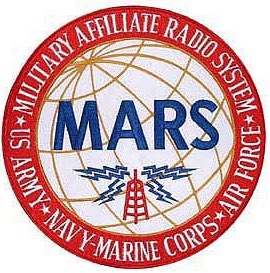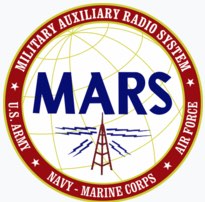While conversing with some of my amateur radio friends I learned about a group of hams who were attached to the military. This group was called “The Military Affiliate Radio System”, or “MARS” for short. Members were trained to help the military in emergencies. Much of their time was devoted to providing communications between soldiers on active duty and their families. This was before satellite phones and the internet, and by ordinary means these communications were often slow and difficult . The MARS system made these contacts more efficient and almost instantaneous. This appeared to me to be a worthwhile endeavor since our country was in the middle of the Vietnam war, so I joined MARS.
After some training I became very proficient in Morse code and was put in charge (net control) of the Sunday night MARS CW (Morse code) net. Message traffic was passed from Vietnam by the military to state-side MARS members. Any of us who lived close to the receiving family would accept the message, translate it to regular English, and forward it to the appropriate person by phone or letter. We could also communicate in the other direction- from civilian to military.
Some MARS members provided “phone patches” so that soldiers could talk to their families in real time.
At that time MARS was the quickest way that messages could be passed between members of the military and civilians.
As a reward for providing this service the MARS member received outdated surplus military equipment that could be modified to use for his radio hobby. Through this program I received much of the equipment that I used for my radio station, along with some that was used at the Ravenna High School radio club and and in the physics lab. My students and I rebuilt several transmitters and receivers that we used in the school radio station.
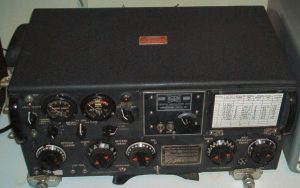
Collins AN-ART-13 auto-tune transmitter used in WWII bombers. I used one in my amateur radio station.
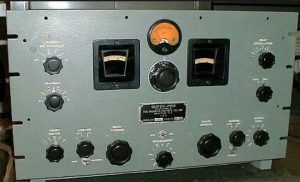
Hammarlund BC779 Super Pro. These were used onboard ships by the Navy and when modified worked well as short-wave receivers.
The most fascinating things I received from MARS were Teletype machines. These beasts consisted of an amazing array of levers, gears, motors and springs, and just sat there and typed all by themselves without any apparent human intervention.
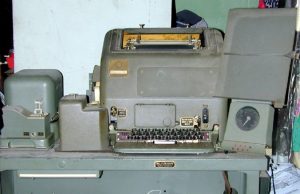
Model 19 Teletype
I built an interface that connected a Teletype machine to my Super Pro receiver. This combination interpreted two timed audio tones, 850 cycles apart, that were sent by the transmitting station, and turned these into typed messages. This seemed like absolute magic! When the cover of the machine was removed, it revealed a whole bunch of stuff in motion that magically typed out messages on a roll of paper!

The “Innards”
When I received my first Teletype machine I hooked it up to my receiver, tuned it to the MARS Teletype station at the Pentagon, and began to make adjustments. All of a sudden it started typing:
” WAR WAR WAR WAR WAR WAR “
I didn’t know whether to run or to get under the bed!
It turns out that the MARS station in the Pentagon had the call letters “WAR” and the machine was acknowledging that I was receiving them. WHEW!
The highlight of my MARS career was when I was chosen (twice!) as an operator of the CW station at the Pentagon in Washington, DC, on Armed Forces Day. MARS celebrated this day with a military to amateur crossband communications test and a message-receiving test. These tests gave amateur radio operators an opportunity to demonstrate their individual technical skills. On this day hams from all over the world tried to contact the Pentagon. If successful they received a QSL card from the Pentagon MARS station.
A QSL card is a fancy postcard acknowledging the fact that your station made contact with another station, naming the call sign, country of origin, signal report, and other comments. These are proudly collected by hams showing the different countries that were contacted. Most ham stations have their walls covered with QSL cards from all over the world. Getting one from the Pentagon on Armed Forces day was a coveted honor.
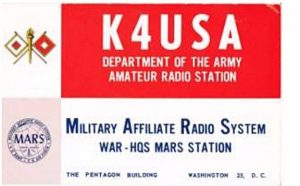
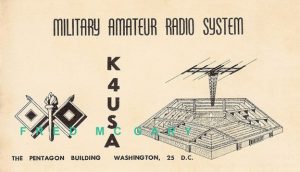
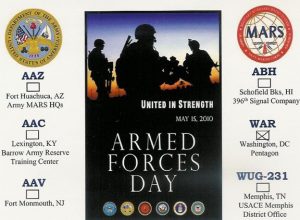
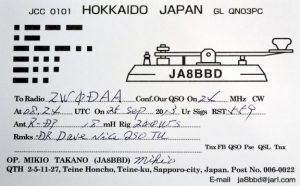
QSL Cards
When operating this station on Armed Forces Day, I was the most sought after person in the ham radio world.
I would send an invitation in Morse code that went something like this:
“CQ CQ CQ de WAR WAR WAR K “
Then listen – and try to untangle the swarm of replies, all jumbled up, sounding like a bunch of mad hornets were after me.
I would answer the strongest signal with a signal report – RST 599 or whatever, and log the event so that the Pentagon could send this guy his QSL card. He might give his QTH (location), but there was no time for chit-chat since there were too many people waiting in line. I would terminate this message and try to identify another caller. When the racket subsided I would send another “CQ” and the process would start all over. This went on all day, and I made literally hundreds of contacts. Needless to say my head was full of dots and dashes for the next week or so.
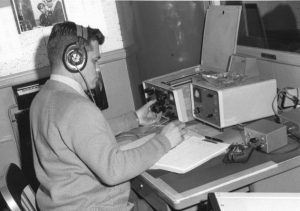
Gene at the Pentagon MARS station
MARS is still active today. It is now called The Military *Auxiliary* Radio System. Morale and welfare messages are no longer the largest activity in MARS due to the increased use of the Internet and e-mail by deployed military personnel. Its primary mission now is to provide contingency communications to the Department of Defense and Military Services. It is also available to assist state and local emergency response agencies.
